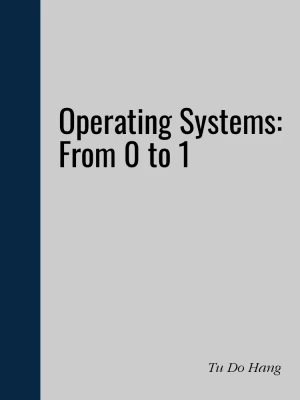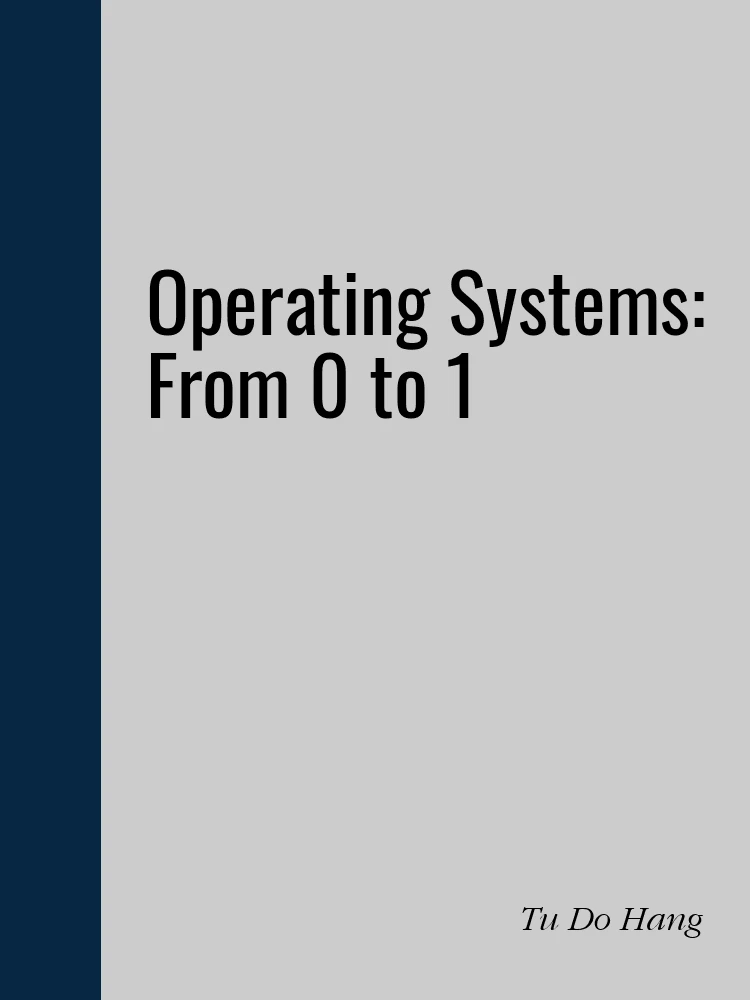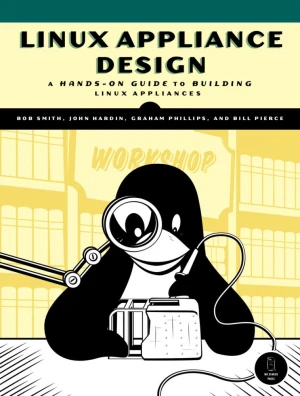Operating Systems: From 0 to 1


Book Details
| Author | Tu Do Hang |
| Published | 2018 |
| Edition | 1st |
| Paperback | 309 pages |
| Language | English |
| License | Open Access |
Book Description
This book helps you gain the foundational knowledge required to write an operating system from scratch. Hence the title, 0 to 1.
After completing this book, at the very least you will learn:
- How to write an operating system from scratch by reading hardware datasheets. In the real world, it works like that. You won't be able to consult Google for a quick answer.
- A big picture of how each layer of a computer is related to the other, from hardware to software.
- Write code independently. It's pointless to copy and paste code. Real learning happens when you solve problems on your own. Some examples are given to kick start, but most problems are yours to conquer. However, the solutions are available online for you to examine after giving it a good try.
- Linux as a development environment and how to use common tools for low-level programming.
- x86 assembly in-depth.
- How a program is structured so that an operating system can run.
- How to debug a program running directly on hardware with gdb and QEMU.
- Linking and loading on bare metal x86_64, with pure C. No standard library. No runtime overhead.
This book is published as open-access, which means it is freely available to read, download, and share without restrictions.
If you enjoyed the book and would like to support the author, you can purchase a printed copy (hardcover or paperback) from official retailers.
Download and Read Links
Share this Book
[localhost]# find . -name "*Similar_Books*"
Operating Systems and Middleware
The scenario describes a user sitting down at a computer to check email. One of the messages includes an attached document to be edited. The user clicks the attachment, and it opens in another window. After starting to edit the document, the user realizes they need to leave for a trip. They save the document in its partially edited state and shut d
How To Code in Go
This book is designed to introduce you to writing programs with the Go programming language. You'll learn how to write useful tools and applications that can run on remote servers, or local Windows, macOS, and Linux systems for development. The topics that it covers include how to: - Install and set up a local Go development environment on Windows,
Linux Appliance Design
Modern appliances are complex machines with processors, operating systems, and application software. While there are books that will tell you how to run Linux on embedded hardware, and books on how to build a Linux application, Linux Appliance Design is the first book to demonstrate how to merge the two and create a Linux appliance. You'll see for
A Treatise on Systems (volume 2)
This 2d volume describes the systematic application of Promise Theory to systems, representing a significant step forward in describing functional systems with both dynamics and semantics. By combining quantitative and qualitative descriptions in a single framework, Promise Theory provides the first impartial language for multiscale system phenomen
The Nature of Code
How can we capture the unpredictable evolutionary and emergent properties of nature in software? How can understanding the mathematical principles behind our physical world help us to create digital worlds? This book focuses on a range of programming strategies and techniques behind computer simulations of natural systems, from elementary concepts
A Practical Guide to Cloud Migration
Why do enterprises feel daunted when undertaking a large-scale cloud transformation? A move to the cloud usually offers substantial rewards. Once companies make this transition, they unlock new business opportunities that fundamentally change the way they work. With this report, members of the Google team will show you how to navigate the cultural






